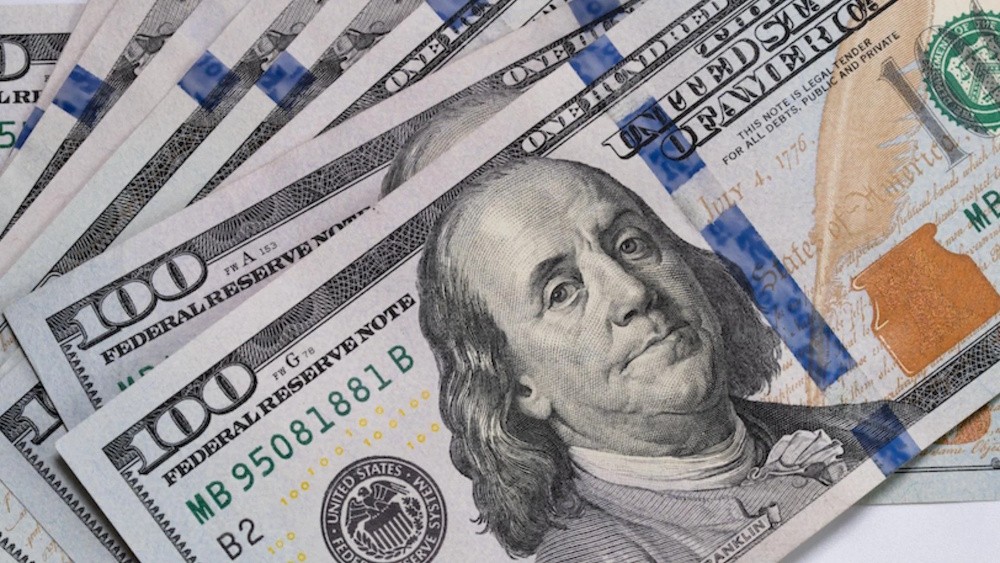
The U.S. dollar experienced a decline against most currencies, with the exception of the yen, on Tuesday. This movement comes in anticipation of a potential U.S. government shutdown, which may hinder the release of the monthly jobs report scheduled for this week. Investor attention was directed towards the looming U.S. shutdown. Government funding is set to expire at midnight on Tuesday unless an agreement is reached between Republicans and Democrats for a last-minute interim deal.
“A potential U.S. government shutdown early Wednesday is exerting downward pressure on the U.S. dollar,” stated Elias Haddad. The rationale suggests that a government shutdown might result in a more dovish Federal Reserve. A short-lived shutdown will likely be overlooked by the Fed. Nonetheless, an extended shutdown (exceeding two weeks) heightens the downside risk to growth and elevates the probability of a more accommodating Fed. U.S. rate futures indicate a pricing of 43 basis points of easing for this year, with an anticipated initial reduction of 25 bp in October, and a significant probability of a subsequent cut by the end of the year. The looming shutdown has created uncertainty among investors who are anticipating the nonfarm payrolls report scheduled for Friday.
The U.S. Labor and Commerce departments announced that their statistics agencies would suspend data releases in the case of a partial shutdown, which includes the highly anticipated employment data for September. The upcoming payrolls report, scheduled for release on Friday, holds significant importance for the Federal Reserve’s decision-making process. Any delay in this report could lead to heightened market volatility, as investor uncertainty is likely to rise. In late morning, the dollar experienced a decline of 0.5% against the yen, reaching 147.86. The report indicated a slight increase in U.S. job openings in August, accompanied by a decline in hiring, reflecting a softening labor market. Job openings, an indicator of labor demand, increased by 19,000 to reach 7.227 million by the end of August. In August, hiring experienced a decline of 114,000, bringing the total to 5.126 million. Layoffs decreased by 62,000, bringing the total to 1.725 million.
The dollar index decreased by 0.2% to 97.756, whereas the euro appreciated by 0.1% to $1.1742. The dollar faced pressure as the Conference Board’s consumer confidence index declined by 3.6 points, settling at 94.2 for this month. Analysts surveyed had projected a decline to 96.0. Investors evaluated the Bank of Japan’s summary of opinions from its September meeting regarding the potential for a near-term rate hike concerning the yen. Traders are currently assigning a 60% probability to a potential increase in December. Strategists indicate that selling dollars for yen may gain traction if a U.S. shutdown occurs. The dollar has appreciated by 0.7% against the yen this month; however, it has declined nearly 6% year-to-date in 2025. This trend reflects investor sentiment regarding the likelihood of gradual increases in Japanese interest rates, contrasted with anticipated declines in U.S. rates. “A lower dollar/yen may well continue to be the preferred trade during the shutdown. It lost 1.5% during the 2018-19 shutdown, and is currently trading 1% above its short-term fair value, according to our model,” stated strategist Francesco Pesole. The Australian dollar experienced an increase of 0.8%, reaching US$0.6625, following the Reserve Bank of Australia’s decision to maintain interest rates, which aligns with their previous three rate cuts this year.
The bank indicated that recent data pointed to the possibility of inflation exceeding forecasts in the third quarter, while the economic outlook continued to be uncertain. In Europe, sterling remained unfazed by data indicating that Britain’s economic growth decelerated to 0.3% between April and June this year. Additionally, the current account deficit expanded significantly in the three months leading to the end of June, reaching an unexpected 3.8% of GDP, an increase from 2.8% in the first quarter of 2025. The pound remained stable at $1.3436, showing a slight decline against the euro, which increased by 0.1% to 87.38 pence. The euro increased by 0.1% relative to the dollar, reaching $1.174.
